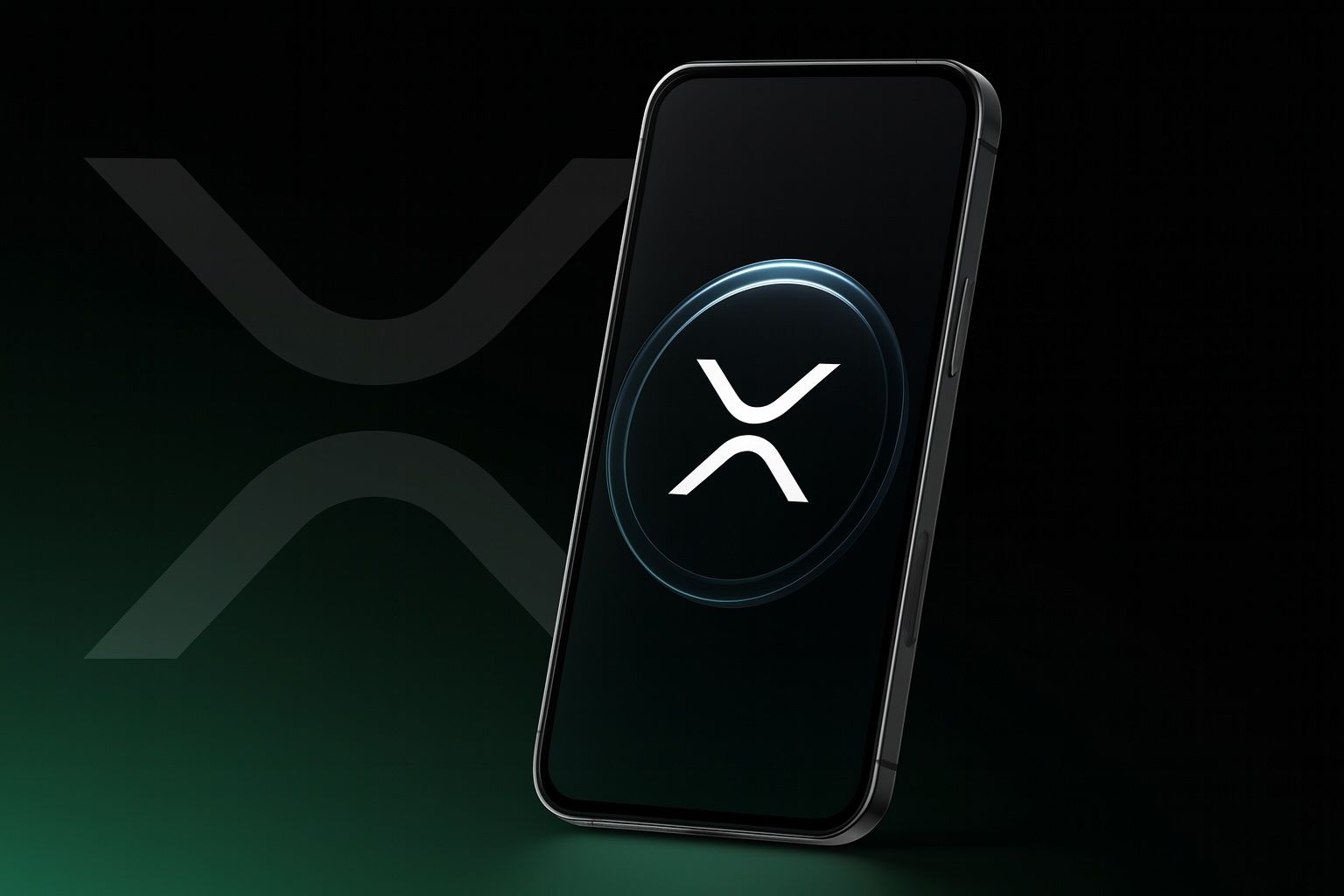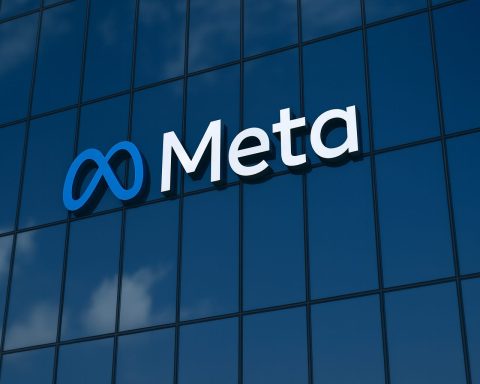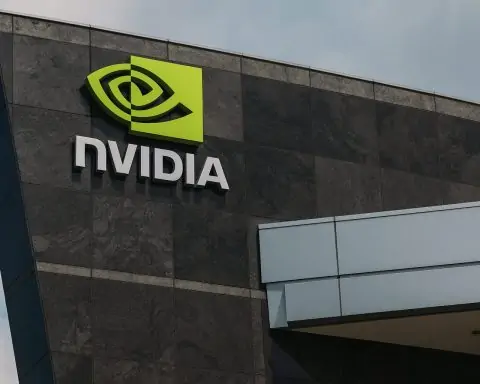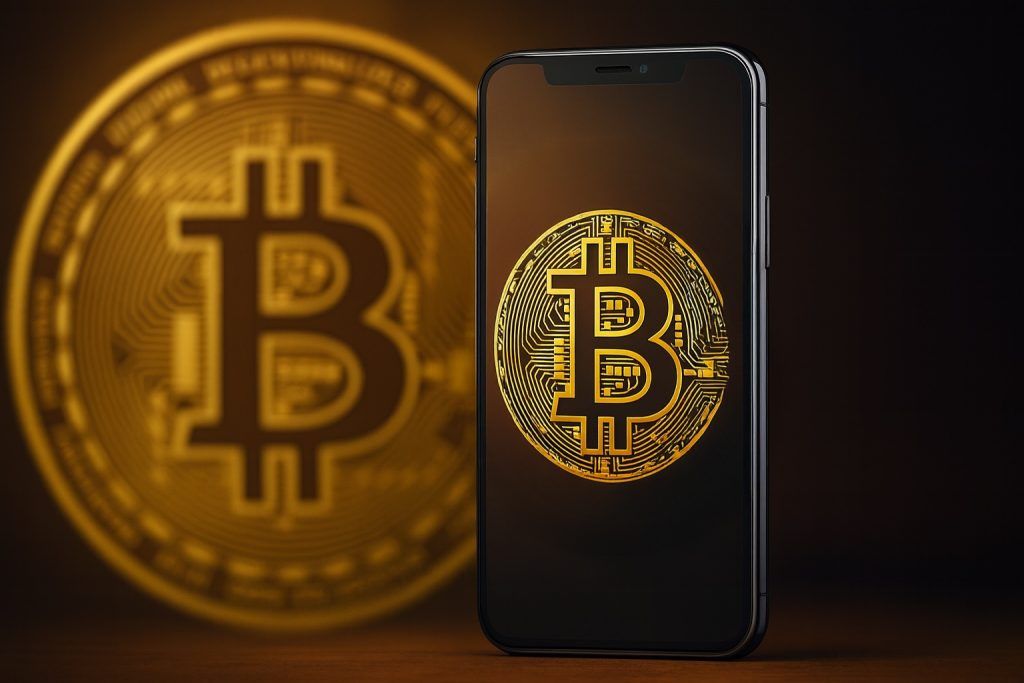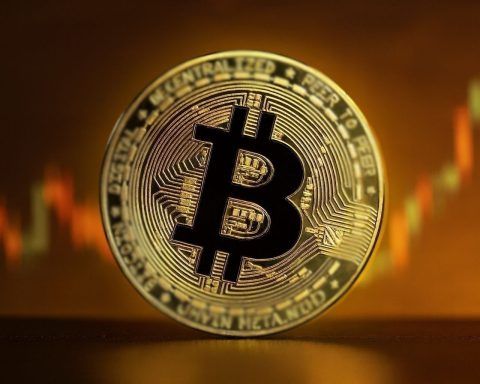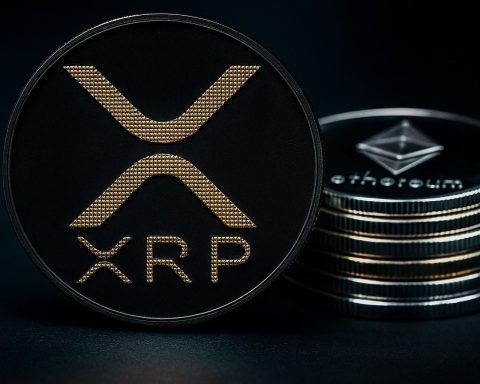Key Facts – October 18, 2025
- Current Price & Recent Volatility: XRP is trading around $2.35 on October 18, 2025, rebounding from a flash crash last week. On October 10, XRP plunged ~42% in minutes (from ~$2.83 to ~$1.53) amid a broader crypto selloff sparked by a surprise U.S.–China tariff threat [1]. It swiftly recovered to close near $2.36 that day and has stabilized in the mid-$2 range [2]. Over the past 24 hours, XRP oscillated between $2.19 and $2.35 before settling near $2.33, as institutional buyers absorbed early selling pressure [3].
- Comparison to Bitcoin & Ether: XRP’s current price (~$2.35) is down from early October highs above $3.00, mirroring a broader market pullback [4]. By mid-October, Bitcoin retreated under $107,000 [5] after hitting a new peak around $125K earlier this month [6]. Ethereum is hovering near $3,900 [7]. XRP’s market capitalization (~$140 billion) places it among the top five crypto assets [8], accounting for roughly 3–4% of total crypto market value [9]. It remains about 35%–40% higher than a year ago despite recent swings [10].
- Ripple Lawsuit Resolved: A major overhang lifted this summer – in August 2025, the SEC formally ended its case against Ripple. The settlement (with a $125 million fine) cemented a 2023 court ruling that XRP is not a security when sold on public exchanges [11]. “The two sides finally settled, bringing closure to one of the most-watched cases in the crypto industry,” the Motley Fool noted [12]. U.S. exchanges swiftly relisted XRP, and Ripple’s legal chief called it “the end of the case,” restoring regulatory clarity [13]. This legal victory paved the way for institutional products like ETFs that were previously on hold.
- ETF Decisions Imminent:October 18–25, 2025 marks a critical window as the U.S. Securities and Exchange Commission faces deadlines on eight spot XRP ETF applications [14]. The SEC postponed decisions in August, clustering them now for a potential coordinated approval [15]. Analysts say odds of approval are extremely high – Bloomberg estimates a 95% chance spot XRP ETFs launch by year-end [16], and prediction markets give ~87% odds [17]. “In October, the SEC might approve a handful of new spot XRP ETFs,” one market strategist said, which could unleash “an influx of billions of dollars of new money into XRP.” JPMorgan earlier projected up to $8 billion of investment could flow in if ETFs go live [18]. Optimists argue this could propel XRP’s price toward the $4–$5 range in short order [19]. However, some caution that much of this “ETF hype” is already priced in, warning of a possible “buy the rumor, sell the news” effect if traders take profits on the announcement [20].
- Market Sentiment – Cautious Optimism: Sentiment on XRP is mixed but improving after the SEC win. Many traders are buying dips in anticipation of ETF approvals and year-end rallies (historically, Q4 has been XRP’s strongest quarter) [21]. On social media, some bulls are exuberant – one broker on X (Twitter) proclaimed “buckle up! XRP to $5 seems fair” once a spot ETF launches [22]. ETF analysts echo this optimism; Nate Geraci told Bloomberg that crypto ETF “floodgates are about to open” with an XRP fund [23]. At the same time, on-chain data shows large holders (“whales”) have been taking profits: in early October, whales moved over 480 million XRP (>$1 billion worth) onto exchanges, adding selling pressure [24]. CryptoQuant analyst Maartunn warned that “selling pressure persists” as these whale transfers continue [25]. Veteran chartist Peter Brandt has even listed XRP among his “short candidates,” cautioning that a failure to hold support could send prices back toward ~$2.20 [26]. As one CoinDesk analyst put it, until XRP definitively breaks out, “talk is cheap; the market wants proof” of a sustained uptrend [27].
- Ripple Ecosystem Developments: Despite volatility, Ripple Labs is doubling down on XRP’s future. The company is reportedly leading a $1 billion fundraise via a special purpose vehicle to accumulate large amounts of XRP [28]. If completed, it would be one of the largest single crypto-focused raises, signaling confidence that XRP demand will grow. According to Bloomberg’s report on the plan, Ripple itself would contribute some of its holdings to the new treasury structure [29]. The bold move comes on the heels of Ripple’s $1 billion acquisition of treasury platform GTreasury announced last week, aimed at integrating crypto solutions for corporate finance chiefs [30]. Ripple has also expanded real-world adoption: over 300 financial institutions now use its blockchain network, with roughly 40% tapping XRP for cross-border liquidity via Ripple’s ODL (On-Demand Liquidity) corridors [31]. Even a USD-backed stablecoin (RLUSD) launched on the XRP Ledger in late 2024, potentially linking XRP demand to stablecoin usage in payments [32]. These developments suggest Ripple is positioning XRP for broader use in payments and treasury markets, which could underpin long-term value.
- Key Levels and Price Drivers: Technical analysts are watching critical price levels on XRP. Recent trading established a support zone around $2.20–$2.25, where institutional buyers stepped in during sell-offs [33]. Short-term resistance is evident around $2.35–$2.40 – XRP repeatedly faltered in that area this week [34]. A decisive break above $2.40 (ideally with strong volume) is needed to confirm a bullish trend reversal and could “signal rotation back toward the $2.70–$3.00 range,” according to CoinDesk market analysts [35]. On the downside, if XRP fails to hold the mid-$2s, traders see risk of a slide back to the low $2.00s (recent intraday low was $2.19). Macro factors continue to influence crypto prices as well: renewed U.S.–China trade tensions, shifting Federal Reserve rate expectations, and broader risk appetite are all affecting crypto market flows [36] [37]. Notably, last week’s XRP crash was tied to a macro shock (tariff news) that triggered nearly $19 billion in crypto liquidations across exchanges [38]. Market capitalization of crypto remains around $3.5 trillion after that pullback [39]. Going forward, SEC ETF rulings and global economic signals (e.g. the Fed’s late-October meeting) are seen as the immediate catalysts that could either reignite a rally or deepen the correction in XRP and its peers.
- Analyst Forecasts – Short Term and 2025 Outlook: Looking ahead, forecasts for XRP diverge dramatically depending on ETF outcomes and market conditions. In the bullish scenario where multiple XRP ETFs win approval and crypto sentiment stays strong, many experts see XRP retesting its 2023 highs and beyond. Standard Chartered analysts predict XRP could reach about $5.50 by the end of 2025 (with ETF approval) and even $8.00 by the end of 2026 [40]. Bloomberg Intelligence is more reserved, modeling XRP in the $3–$5 range by year-end under a base case, but up to ~$6 in a bullish-case scenario [41]. Crypto exchange Crypto.com’s research team similarly projected a possible $4–$8 price range for XRP if ETF inflows materialize as expected [42]. By contrast, more conservative voices argue XRP may end the year closer to $3–$4 if no big catalyst hits, noting that without an ETF “head start” like Bitcoin and Ether had, XRP could continue lagging its mega-cap counterparts [43] [44]. As for short-term targets, a panel of technical traders agreed that a successful ETF launch could trigger a spike toward $4.50–$5.00 within weeks, whereas a rejection or delay might see XRP revisit the low-$2 range before finding support [45] [46]. Longer-term forecasts (5+ years) venture into double digits: for instance, Standard Chartered’s scenario for a sustained adoption boom sees XRP near $12 by 2028 [47], and some ultra-bullish crypto fund managers even eye $10–$20+ by 2030 if multiple catalysts align [48]. Still, all sides agree that 2025–26 will be pivotal – as Ripple’s CEO Brad Garlinghouse recently remarked, a U.S. spot XRP ETF approval is “inevitable” in his view [49], but execution on real-world use cases will determine if XRP can graduate from speculative fervor to sustained fundamental growth.
XRP Price Recovers Amid Crypto Market Whiplash
After a roller-coaster month, XRP has regained some stability around $2.35 as of Oct. 18. The past week epitomized crypto volatility: on Oct. 10, Ripple’s token cratered by nearly half its value in hours, falling from the mid-$2.80s to roughly $1.64 at the lows [50] [51]. The sudden crash – among the steepest of any major crypto this year – was triggered by shockwaves from traditional markets. That day, U.S. President Trump’s abrupt threat of 100% tariffs on Chinese goods sent investors scrambling out of risk assets, pummeling equities, commodities and cryptocurrencies alike [52]. XRP, which had been outperforming earlier in the month, was hit especially hard as cascading liquidations of leveraged positions exacerbated the downturn [53]. Exchange data show nearly $19 billion in crypto futures positions were wiped out across the market during the sell-off [54], illustrating how one macro surprise can ricochet through highly-levered crypto markets.
Remarkably, XRP’s plunge was followed by an equally swift rebound. By the next day (Oct. 11), buyers rushed in to “buy the dip,” and XRP had already doubled off its lows to trade back in the mid-$2s [55]. Over Oct. 11–13, the token stabilized around $2.50–$2.60 as aggressive institutional buying buoyed prices [56]. CoinDesk reported that on Oct. 12 alone, XRP’s price jumped from $2.37 to $2.58 – a ~$0.21 gain equating to a $30 billion market cap recovery – amid a surge of volume nearly three times the 30-day average [57]. This rapid reversal on heavy trading signals that large players saw value at the lower prices. “Institutional dip-buying absorbed the panic,” noted one CoinDesk market analyst, describing the move as a “controlled rotation” rather than a structural collapse [58]. By last weekend, XRP had carved out an ascending price channel between roughly $2.37 support and $2.58 resistance [59].
Heading into this week, however, momentum stalled. Broader crypto sentiment turned cautious as initial rebound gains faded. On Oct. 17, Bitcoin slipped back below $107,000 and Ether near $3,900, amid what appeared to be a “controlled deleveraging” across crypto markets [60] [61]. Altcoins like XRP and Cardano surrendered most of their post-crash bounce – XRP was down roughly 17% week-to-date by Tuesday, giving back the bulk of its early-week recovery [62] [63]. Traders cited a cocktail of concerns: macroeconomic jitters, including U.S.–China trade tensions and an upcoming Federal Reserve meeting, led to a rotation of funds from altcoins into safe havens like stablecoins [64]. “Altcoins are under pressure as liquidity rotates back into Bitcoin and stablecoins amid risk-off sentiment,” observed Wenny Chung, COO of SynFutures, adding that thinner order books have amplified volatility for smaller tokens [65].
Even so, XRP has largely held the line in the mid-$2s, showing resilience relative to some peers. As of Oct. 18, it trades around $2.33–$2.35, roughly flat over 24 hours and up modestly (~+2.6%) from its Oct. 17 close [66]. Intra-day charts indicate XRP “recovered from an early dip to $2.19” on Oct. 18 and briefly tested $2.35 as buyers stepped in [67]. Trading volumes spiked during the volatility – at one point topping 246 million XRP in an hour, nearly triple the normal activity, as capitulating sellers met eager buyers around the $2.20 level [68]. By holding this support, XRP logged a 1% gain over the latest daily session [69], suggesting consolidation. “Consolidation between $2.32–$2.34 formed a new short-term base, validating strong absorption near prior lows,” CoinDesk noted in its market update [70] [71]. In other words, despite the dramatic whipsaw, XRP is right back in the trading range it occupied just before the crash, albeit off its monthly highs.
Zooming out, XRP is still up significantly in 2025. Year-to-date the token has gained about 23% [72] (much of it in early Q1 during a wave of crypto optimism following the 2024 bull run and pro-crypto sentiment around the new U.S. administration [73]). On a 12-month basis, XRP is roughly 35–40% higher than it was in October 2024 [74], handily outperforming many altcoins. It also hit a multi-year high this summer: in July, XRP briefly topped out around $3.65, its highest level since the 2018 cycle, following a landmark legal win against the SEC [75]. That July peak now stands as a 52-week high (and near the all-time high zone), and XRP has been range-bound below $3 in recent months [76]. The recent volatility has kept it below that threshold. But with pivotal events on the horizon, traders are bracing for the next big move – which could finally push XRP out of its range, for better or worse.
Legal Victory Clears XRP’s Path – “Not a Security” and Back to Mainstream
A key factor differentiating XRP’s outlook today versus a year ago is regulatory clarity. The cryptocurrency spent nearly three years under a legal cloud from the SEC’s lawsuit (filed in late 2020) alleging XRP was an unregistered security. That uncertainty largely kept U.S. institutions on the sidelines and led to XRP’s delisting from major American exchanges for a time. Now, in 2025, that saga has definitively concluded in Ripple’s favor.
In August 2025, the SEC dropped its remaining case against Ripple Labs, opting not to pursue further appeals after a series of courtroom setbacks [77]. Ripple agreed to pay a civil fine (reportedly $125 million) but crucially, there was no admission of securities violations, and the outcome affirmed Judge Analisa Torres’s 2023 ruling: XRP itself is not a security when traded on open markets [78]. That landmark ruling – which distinguished between institutional sales of XRP (which did violate securities law) and public secondary sales (which did not) – is now effectively law of the land, since the SEC chose not to challenge it further. “This summer’s resolution of the long-running SEC case against Ripple… opened a new window of opportunity for XRP,” wrote Dominic Basulto in Yahoo Finance [79]. With the case closed, U.S. exchanges including Coinbase promptly relisted XRP in August [80], restoring American investors’ access. Ripple’s Chief Legal Officer Stuart Alderoty declared the settlement “the end of the case” and heralded it as a victory for clarity in the crypto industry [81].
The end of the lawsuit has had profound effects on market sentiment and development for XRP. First and foremost, it unlocked the possibility of regulator-approved investment vehicles. While the case loomed, it was implausible that the SEC would entertain any XRP-based exchange-traded products. But almost immediately after the legal win, a flood of spot XRP ETF filings hit the SEC’s desk. At least six major asset managers – including industry giants BlackRock, Grayscale, WisdomTree, Invesco, Valkyrie, Bitwise and others – filed or reactivated applications for spot XRP ETFs in mid-2025 [82]. (Notably, several already offer Bitcoin and Ether ETFs after those were approved earlier in the year.) Confidence is high: crypto analysts have assigned “near-100% odds” that U.S. regulators will approve one or more XRP ETFs by the end of October [83]. Even the Polymarket prediction exchange shows bettors essentially certain (≈100% implied probability) that a spot XRP fund gets the green light by year-end [84].
Ripple’s leadership is also projecting optimism. CEO Brad Garlinghouse has publicly said a U.S. spot XRP ETF approval is “inevitable” in 2025, emphasizing that the product is a natural next step now that legal impediments are gone [85]. Industry observers note that the SEC’s stance toward crypto ETFs has shifted markedly – after years of resistance, the agency approved multiple spot Bitcoin and Ether ETFs in late 2024 and 2025, often in batches. Many believe XRP will be next in line. “All told, there are eight different spot XRP ETFs that could be approved between Oct. 18 and 25,” according to The Motley Fool [86]. The SEC already delayed these decisions once (in August), likely timing them together just as it did for Bitcoin ETFs last year [87].
Beyond ETFs, Ripple’s legal victory has improved XRP’s standing in the eyes of potential institutional users and partners. With the security question resolved, banks and fintech firms can more comfortably integrate XRP for payments or custody. Just days after the case ended, Ripple announced it was applying for a clearinghouse license in the U.S., aiming to further embed itself in traditional finance infrastructure (though that is a long process). While regulatory clarity alone doesn’t guarantee adoption, it removes a key barrier. As Ripple’s General Counsel Stu Alderoty quipped, the end of the case means “XRP is X (formerly known as Twitter) official – not a security”, underlining that the token is now on similar legal footing as Bitcoin and Ether.
ETF Hype vs. Reality: Investors Weigh Ripple’s Big Moment
The hottest storyline driving XRP’s price right now is the looming ETF decision. Crypto investors have dubbed this month “Uptober” in anticipation that a spot XRP ETF approval could spark a rally. So far, that optimism has been tempered by macro headwinds, but many see the next week as make-or-break. October 18, 2025 (today) is the date the SEC could issue the first decisions – though it’s not guaranteed to announce exactly on this date, it’s the start of the window. By October 25, we’ll know whether spot XRP ETFs are approved, denied, or delayed further (a delay is considered unlikely at this point given prior postponements).
What would an ETF mean for XRP? If approved, spot ETFs would allow both retail and institutional investors to gain exposure to XRP via traditional stock markets, without having to hold the cryptocurrency directly. This is seen as a catalyst for new inflows. “The arrival of ETFs will likely lead to an influx of billions of dollars of new money into XRP,” a Motley Fool analysis noted [88] [89]. In fact, back in early 2025, JPMorgan estimated that spot XRP ETFs could collectively bring in around $5–8 billion in capital relatively quickly [90]. That’s roughly 3–4% of XRP’s current market cap – not world-changing, but enough to move the needle. For context, when the first spot Bitcoin ETFs launched in January, Bitcoin’s price soared 160% within a few months as money poured in [91]. If XRP saw even a fraction of that effect, we could be looking at a swift move from sub-$3 to $4+. “If history repeats… XRP could soar from a price of less than $3 to as much as $5,” the Motley Fool’s Basulto wrote, while calling $5 a “maximum upside scenario” assuming bullish conditions [92].
Many analysts are indeed modeling a post-ETF rally. Cointelegraph noted that earlier this month XRP’s technical setup was exceptionally bullish – the token had just reclaimed $3 on Oct. 3 and flashed a rare “RSI golden cross” signal that in past instances preceded rallies of +30% to +500% [93] [94]. Their market strategists posited XRP was “in a good position to rally toward $3.98–$4.32” in October, contingent on positive news like ETF approvals [95]. Another bullish indicator was a descending triangle breakout on multi-day charts that pointed to a ~$3.98 technical target [96]. In short, heading into mid-October, many traders were positioned for an upside pop – and the ETF decisions are seen as the trigger that could make those bullish predictions come true.
However, there is a flip side: the risk of disappointment or a muted reaction. A number of market veterans warn that XRP’s ETF catalyst is “well-telegraphed” – meaning everyone knows it’s coming, so the price may have already incorporated a lot of that optimism. “For more than eight months, traders have been expecting this approval, so there’s not going to be any surprise news on Oct. 18 when it happens,” Basulto pointed out [97]. If markets are efficient, any SEC approval might be met with a shrug – or even a sell-off. The classic “buy the rumor, sell the news” scenario looms: traders bid up XRP into the SEC decision, then take profits immediately after an approval, reasoning that the best short-term gains are behind. We saw a similar dynamic with Bitcoin’s ETF launch; after an initial jump, Bitcoin actually retraced some gains as traders rotated elsewhere.
Another consideration is timing and competition. It’s possible not all XRP ETFs will be approved at once. The SEC could stagger decisions or even approve only one initial fund (for instance, the Grayscale XRP Trust’s conversion or BlackRock’s filing) and push others to a later date. Any unexpected delay or partial approval could inject volatility. Moreover, if multiple ETFs hit the market simultaneously, they might split the demand. Unlike Bitcoin – which commands a unique “digital gold” appeal – XRP will be the third crypto with ETFs (after BTC and ETH), so it might not see the same frenzy of new investors who were waiting on the sidelines.
Market sentiment surveys show traders are far from unanimous on what happens next. A recent poll of crypto investors found about 40% believe XRP can “clear $4 by end of October” (essentially pricing in a big ETF pump), while the rest think XRP will either stall or pull back to $2–$2.50 first before any major move up [98]. This split reflects the uncertainty: plenty of short-term speculators are betting on a pop, but just as many are hedging or expecting one more shakeout if the news underwhelms.
Ultimately, the ETF verdicts in the coming days are pivotal. In one scenario, XRP finally gets its mainstream debut via Wall Street, potentially unlocking fresh demand and ending its multi-year stretch below all-time highs. In another scenario, the event becomes an anticlimax – approvals come through as expected, but with no immediate price fireworks, leaving XRP stuck in its range and vulnerable to the next macro-driven move. As we approach the moment of truth, all eyes are on the SEC and the potential announcements (which could drop at any time before the deadlines). “I’ve already circled Oct. 18 on my calendar,” said The Motley Fool’s analyst, “If the price of XRP is going to start moving north again this year, that’s when it’s going to happen.” [99]
Ripple’s Big Bets: $1B Treasury Play and Growing Utility
Amid the speculative frenzy around price swings and ETFs, it’s worth noting that Ripple – the company closely affiliated with XRP – is actively investing in the token’s long-term value. In fact, Ripple has taken advantage of the post-lawsuit window to implement major strategic moves:
- $1B XRP Treasury Initiative: Ripple is reportedly spearheading the creation of a new Digital Asset Treasury (DAT) specifically to accumulate XRP at scale [100]. According to a Bloomberg scoop (echoed by CoinDesk), Ripple aims to raise at least $1 billion from outside investors via a special-purpose vehicle, essentially an XRP-focused investment fund [101]. Ripple itself would also contribute a portion of its sizable XRP holdings. The plan is said to mirror the playbook of companies like MicroStrategy (now “Strategy Inc.”), which famously stockpiled Bitcoin on its balance sheet [102]. If successful, this would mark one of the largest single pools of capital dedicated to buying and holding a cryptocurrency. As of this week, XRP’s total market cap is about $138 billion [103] [104] – so a $1B fund could acquire roughly 0.7% of all XRP (at current prices) if deployed fully. Ripple’s wager seems clear: strategic accumulation and active treasury management could help bring “stability – or at least predictability – to XRP’s supply dynamics as the token plays a growing role in institutional payments,” CoinDesk noted [105]. In other words, by locking up a large amount of XRP in a long-term vehicle, Ripple aims to smooth out supply shocks and instill confidence among big users.
- Corporate Treasury Expansion: In tandem with the above, Ripple on Oct. 16 announced a $1 billion acquisition of GTreasury, a cloud-based treasury management platform used by many corporations [106]. The move is strategic: it’s designed to integrate Ripple’s crypto solutions (like XRP for cross-border liquidity, and perhaps new stablecoins) into mainstream corporate finance workflows. By owning GTreasury, Ripple gains direct access to CFOs and treasurers at companies that manage billions in cash. Ripple framed the deal as “a bridge to finance chiefs… experimenting with tokenized deposits and stablecoins.” [107] This signals Ripple’s broader vision of making XRP and related digital assets part of the plumbing in the global financial system – not just a speculative asset, but a tool for moving money efficiently. If that vision materializes, demand for XRP could become more fundamentally driven (by transaction needs) rather than purely by investor sentiment.
- Bank Partnerships and ODL Growth: Ripple’s core business – cross-border payments – continues to expand. The company claims over 300 financial institutions (banks, remittance providers, etc.) have joined its RippleNet network [108]. Importantly, about 40% of those are utilizing XRP via On-Demand Liquidity (ODL) corridors to settle transactions [109]. Major banks like Santander, American Express, PNC, and Japan’s SBI Remit have run pilots or programs using XRP for real-world money transfers [110]. This institutional usage was once limited by regulatory fears (especially in the U.S.), but with clarity in place, it could grow. Each ODL transaction burns a tiny amount of XRP as a fee, so increased volume can have a modest deflationary effect on supply while showcasing utility.
- New XRP-Linked Products: Ripple is also branching into new products that could bolster the XRP ecosystem. One example is RLUSD, a dollar-pegged stablecoin issued on the XRP Ledger in late 2024 [111]. Unlike typical stablecoins, RLUSD uses XRP for transaction fees and ledger reserves, meaning as its circulation grows, it indirectly drives XRP demand (users need XRP to move RLUSD around) [112]. It’s part of Ripple’s strategy to make the XRP Ledger a versatile platform for not just XRP but other assets too – the more activity on the ledger (whether from stablecoins, NFTs, or smart contracts), the more XRP is required to fuel that activity.
All these moves paint a picture of Ripple doubling down on XRP even in volatile times. “Despite the volatility, Ripple appears to be pressing ahead with its long-term buildout,” CoinDesk observed, noting how bold the timing is [113] [114]. Committing $1B to buy XRP when markets are shaky is a confident (some might say risky) bet. Ripple already holds about 4.7 billion XRP in its own coffers (~$11 billion worth) plus another 35.9 billion XRP locked in escrow releases [115], so it has skin in the game. By increasing that stake and actively engaging with institutional finance (ETFs, treasury tools, etc.), Ripple is trying to catalyze a virtuous cycle: more credibility and use cases lead to higher demand, which drives price and justifies even more adoption.
For XRP investors, Ripple’s actions are a double-edged sword. On one hand, they signal strong commitment and confidence from the token’s biggest stakeholder – certainly a bullish sign that Ripple is “all in” on XRP’s future. On the other hand, skeptics note that concentrated ownership and control (Ripple’s treasury and the new DAT fund) could increase centralization or at least make XRP’s price more dependent on Ripple’s decisions. Additionally, if Ripple’s gambit fails to stabilize the market or stimulate utility, it could be seen as an unnecessary risk. “The timing is as bold as it is risky,” CoinDesk commented on the $1B fundraise plan, given the still-fragile market sentiment post-crash [116]. For now, however, the news of Ripple’s proactive moves has been taken positively – it reinforces a narrative that XRP is here to stay and that the company will actively work to support its ecosystem during both bull and bear cycles.
Technical Picture: XRP Range-Bound, Awaiting a Breakout
From a technical analysis standpoint, XRP’s chart shows a market in consolidation, potentially coiling for a larger move once current uncertainties resolve. Key support and resistance levels have emerged in recent weeks:
- Support at $2.20–$2.30: This zone has been tested multiple times during the recent turmoil. Notably, ~$2.23 was where buyers stepped in forcefully during the Oct. 18 early-morning dip [117]. Also, $2.25 was roughly the pre-crash low in late September before the October rally began, making it a pivotal level. Analysts see this mid-$2 support as critical – a close below ~$2.20 on high volume would be a bearish breakdown, potentially triggering algorithmic sell-offs. Thus far, XRP has defended this area, indicating accumulation. “Sub-$2.20 exposure continues to attract long interest,” CoinDesk’s market report noted, meaning big players are willing to buy below $2.20 [118]. If panic were to drive XRP under $2.00 (the psychological level), the next support would likely be around $1.50 (the intraday crash low and a round-number mark). But few expect a move that drastic absent a new negative shock.
- Resistance at $2.35–$2.40: In the immediate term, this band has capped XRP’s rebound attempts [119]. XRP tapped ~$2.38 on Oct. 17 and again ~$2.374 on Oct. 18 but couldn’t sustain above $2.35 [120]. Technical traders point out this corresponds roughly to the 20-day moving average and the lower end of XRP’s early-October trading range, which now acts as resistance. CoinDesk highlighted $2.40 as the key trigger level: a “breakout confirmation [is] needed above $2.40” to flip the short-term trend bullish [121] [122]. Should XRP pierce $2.40 with conviction (especially if on an ETF approval headline), chartists expect quick moves to higher levels since there’s a “volume gap” between $2.40 and the next supply zones.
- Higher targets – $2.70, $3.00, $3.30: Above $2.40, minor resistance may appear around $2.70–$2.75, which was a support shelf prior to the crash (and coincides with the 50-day moving average). Beyond that, $3.00 is an obvious milestone – not only a round number, but also near the September high (~$2.98) that preceded October’s breakout [123] [124]. According to Cointelegraph’s analysis, $2.75 was the “must-hold” level for XRP to restart its rally in October [125] [126]. Holding above it (which failed during the crash) would open the path toward the next resistance at $2.86–$2.90 (around the 100-day moving average) and then the bullish target of a triangle pattern at $3.62 [127] [128]. Many analysts are eyeing $3.30–$3.50 as a crucial inflection zone – that’s where XRP topped in August and again in early October. A “decisive close above ~$3.30–$3.70” would confirm a longer-term uptrend, one trader noted [129]. It could catalyze follow-through buying up to $4+, given that beyond $3.70 there isn’t much historical resistance until the 2018 all-time high (~$3.84) and then the $4+ zone.
- Indicators & Pattern: On the daily chart, momentum indicators have cooled off since early October. The Relative Strength Index (RSI) is now neutral (~50), after flashing overbought (>70) during the $3+ rally and then oversold (<30) during the crash [130]. This reset could provide room for a new trend to build. The Moving Average Convergence Divergence (MACD) is stabilizing, hinting at a potential bullish cross if price gains momentum [131]. Chartists also note XRP may be forming a symmetrical triangle pattern on the daily timeframe, bounded roughly by declining highs from $3.30 and rising lows from $2.20. Such consolidation often precedes a breakout; by mid-October, this triangle’s apex is nearing, meaning volatility could contract until a breakout (up or down) occurs by early November at the latest. Volume profiles show strong accumulation in the $2.50s (before the crash) and again around $2.30 (after the crash), suggesting these levels have the most trading interest – a breakout from those zones could see volume confirmation.
In summary, XRP is range-bound for now, awaiting a catalyst to choose direction. The short-term bias among many traders is cautiously bullish provided $2.20 holds: they anticipate a relief rally if external news (like an ETF approval or dovish Fed tone) tilts positive. “If a spot XRP ETF is approved, analysts warn XRP could ‘quickly run toward the mid-$4s or even $5’ as money flows in,” according to a TS2.Tech markets report [132] [133]. Conversely, without such a catalyst, XRP may simply chop sideways between the mid-$2s and low-$3s, and risk another downturn if broader crypto sentiment deteriorates. A failure to break $2.40–$2.50 in the coming weeks could invite sellers back, possibly retesting $2.50 then $2.30 support. As one crypto trader summed up on X: “Holding above ~$2.70–$2.80 would be an encouraging sign” for bulls, “but dropping below $2.50 would favor the bears.” [134] [135] Those appear to be the lines in the sand that will determine XRP’s next chapter.
Outlook: Cautiously Bullish Into Year-End, But Mind the Risks
With two and a half months left in 2025, XRP stands at a crossroads. The pieces are in place for a potentially strong finish to the year: legal clarity is secured, major institutional catalysts (ETFs) are on deck, and Ripple itself is taking steps to boost the ecosystem. Even historical seasonality is on XRP’s side – Q4 tends to be this asset’s best quarter on average (XRP famously rallied 240% in Q4 2024 after the initial court ruling, and even in some bear years logged gains in late Q4) [136] [137]. Many in the community have dubbed this period “Uptober” and “Moonvember” in hopes of a repeat performance.
Market forecasters largely expect XRP to end 2025 higher than it is now, though to varying degrees. In a recent compilation of expert predictions, TS2.Tech reported that “best-case bulls” see XRP in the $4–$6 range by late 2025, with some ultra-bullish pundits even eyeing $10+ if everything goes right [138]. These higher-end targets generally assume multiple positive drivers: not just ETF approvals, but also a supportive macro backdrop (e.g. lower interest rates fueling risk appetite) and continued growth in real usage. On the flip side, conservative forecasts cluster around $3–$4 for year-end [139]. This view holds that while XRP’s legal victory was significant, the token might need more time and tangible adoption wins to justify a move back to record highs. It’s worth noting that even $3–$4 would represent roughly a 30–70% gain from current levels, so it’s not bearish per se – just not a “to the moon” scenario.
Wall Street institutions that have weighed in are moderately optimistic. Standard Chartered, the multinational bank, has a crypto research team which put out a note targeting about $5.5 for XRP by end-2025 (assuming at least one U.S. ETF goes live) [140]. They further projected up to $8 by end-2026, believing enterprise adoption of XRP will ramp up in that time frame [141]. Bloomberg Intelligence’s latest outlook mentioned a base case of “$3–$5 by year-end” – essentially XRP holding in its recent range or modestly exceeding it – with a bull case around $6 if ETF-driven momentum is strong [142]. These are far below the stratospheric $10+ calls one might see on social media, but they still imply new multi-year highs are reachable if catalysts align.
Traders and influencers on crypto platforms present an even wider spectrum of possibilities. On one end, figures like Kris Marszalek (CEO of Crypto.com) suggest XRP could surge into the $4–$8 zone by December if the expected $4–$8 billion of institutional inflows materialize over the next year [143]. On the other, skeptics like Peter Brandt and some veteran crypto lawyers caution that without an ETF or other major driver, XRP could just as easily “languish” in the mid-$2s or slump back under $2 in a risk-off market [144] [145]. The presence of whale selling is a concern: data from Whale Alert and CryptoQuant has shown big holders unloading large tranches of XRP above $3, which contributed to recent local tops [146]. If XRP were to spike on news, these whales might sell into strength again, capping the rally.
Market sentiment heading into year-end is thus cautiously bullish but hedged. Many retail investors express fear of “missing out” if an ETF rally takes off, which is bullish from a contrarian perspective (it means sideline money could rush in on a breakout). At the same time, the macro environment remains a wild card – any resurgence of inflation concerns, another geopolitical shock, or crypto-specific issue (e.g. a major exchange failure) could derail positive momentum across the board. It’s also worth watching Bitcoin’s performance: BTC is up over 100% this year and hovering around six figures. If Bitcoin continues to climb or at least stay strong, it often creates a tailwind for altcoins like XRP as investors rotate profits into higher-beta plays. Conversely, if Bitcoin corrects sharply (some analysts think BTC could see a healthy pullback after its huge run), it might drag down the entire market including XRP.
In conclusion, XRP enters late October 2025 with renewed relevance and anticipation. The token’s price of ~$2.35 today belies the flurry of activity and expectations swirling around it. “XRP would have a legitimate chance of hitting a new all-time high above the $4 mark by the end of the year” if the coming catalysts pan out, opined a Yahoo Finance analysis [147]. Certainly, the ingredients for a significant rally are present: regulatory clearance, impending ETF decisions, increasing institutional involvement, and a supportive historical trend in Q4. But the past week’s turbulence was a reminder that nothing is guaranteed in crypto. As one observer noted, “If there is one cryptocurrency that has consistently overpromised and underdelivered in 2025, it’s XRP” [148] – a tongue-in-cheek reference to how hype often outran reality earlier in the year. Now, with the spotlight back on XRP, the coming days and weeks will test whether this asset can finally deliver on years of pent-up expectations. Investors are watching closely: either XRP will break out of its long-held range and justify the enthusiasm, or it may remain bound in the shadow of Bitcoin and Ethereum, awaiting the next opportunity to shine. In the words of CoinDesk’s market team, “until there’s proof of a breakout, talk is cheap” [149] – and for XRP, that proof will likely be seen in its price chart as 2025 winds down.
Sources: XRP price and market data from CoinDesk, Cointelegraph, TS2.Tech, Yahoo Finance, Bloomberg, and other news outlets [150] [151] [152] [153].
References
1. www.trefis.com, 2. www.trefis.com, 3. www.coindesk.com, 4. www.trefis.com, 5. www.coindesk.com, 6. ts2.tech, 7. www.coindesk.com, 8. ts2.tech, 9. ts2.tech, 10. ts2.tech, 11. ts2.tech, 12. www.sharewise.com, 13. ts2.tech, 14. www.nasdaq.com, 15. www.nasdaq.com, 16. www.nasdaq.com, 17. www.nasdaq.com, 18. www.nasdaq.com, 19. www.nasdaq.com, 20. www.nasdaq.com, 21. cointelegraph.com, 22. ts2.tech, 23. ts2.tech, 24. ts2.tech, 25. ts2.tech, 26. ts2.tech, 27. ts2.tech, 28. www.coindesk.com, 29. www.coindesk.com, 30. www.coindesk.com, 31. ts2.tech, 32. ts2.tech, 33. www.coindesk.com, 34. www.coindesk.com, 35. www.coindesk.com, 36. www.coindesk.com, 37. www.coindesk.com, 38. www.coindesk.com, 39. www.coindesk.com, 40. ts2.tech, 41. ts2.tech, 42. ts2.tech, 43. ts2.tech, 44. ts2.tech, 45. ts2.tech, 46. ts2.tech, 47. ts2.tech, 48. ts2.tech, 49. ts2.tech, 50. ts2.tech, 51. ts2.tech, 52. www.trefis.com, 53. www.trefis.com, 54. www.coindesk.com, 55. ts2.tech, 56. ts2.tech, 57. ts2.tech, 58. www.coindesk.com, 59. ts2.tech, 60. www.coindesk.com, 61. www.coindesk.com, 62. www.coindesk.com, 63. www.coindesk.com, 64. www.coindesk.com, 65. www.coindesk.com, 66. www.investing.com, 67. www.coindesk.com, 68. www.coindesk.com, 69. www.coindesk.com, 70. www.coindesk.com, 71. www.coindesk.com, 72. www.nasdaq.com, 73. www.nasdaq.com, 74. ts2.tech, 75. www.nasdaq.com, 76. www.nasdaq.com, 77. ts2.tech, 78. ts2.tech, 79. www.sharewise.com, 80. ts2.tech, 81. ts2.tech, 82. ts2.tech, 83. ts2.tech, 84. cointelegraph.com, 85. ts2.tech, 86. www.nasdaq.com, 87. www.nasdaq.com, 88. www.nasdaq.com, 89. www.nasdaq.com, 90. www.nasdaq.com, 91. www.nasdaq.com, 92. www.nasdaq.com, 93. cointelegraph.com, 94. cointelegraph.com, 95. cointelegraph.com, 96. cointelegraph.com, 97. www.nasdaq.com, 98. ts2.tech, 99. www.nasdaq.com, 100. www.coindesk.com, 101. www.coindesk.com, 102. www.coindesk.com, 103. www.coindesk.com, 104. www.coindesk.com, 105. www.coindesk.com, 106. www.coindesk.com, 107. www.coindesk.com, 108. ts2.tech, 109. ts2.tech, 110. ts2.tech, 111. ts2.tech, 112. ts2.tech, 113. www.coindesk.com, 114. www.coindesk.com, 115. www.coindesk.com, 116. www.coindesk.com, 117. www.coindesk.com, 118. www.coindesk.com, 119. www.coindesk.com, 120. www.investing.com, 121. www.coindesk.com, 122. www.coindesk.com, 123. cointelegraph.com, 124. cointelegraph.com, 125. cointelegraph.com, 126. cointelegraph.com, 127. cointelegraph.com, 128. cointelegraph.com, 129. ts2.tech, 130. www.coindesk.com, 131. www.coindesk.com, 132. ts2.tech, 133. ts2.tech, 134. ts2.tech, 135. ts2.tech, 136. cointelegraph.com, 137. cointelegraph.com, 138. ts2.tech, 139. ts2.tech, 140. ts2.tech, 141. ts2.tech, 142. ts2.tech, 143. ts2.tech, 144. ts2.tech, 145. ts2.tech, 146. ts2.tech, 147. www.sharewise.com, 148. www.nasdaq.com, 149. ts2.tech, 150. www.coindesk.com, 151. ts2.tech, 152. ts2.tech, 153. www.sharewise.com
